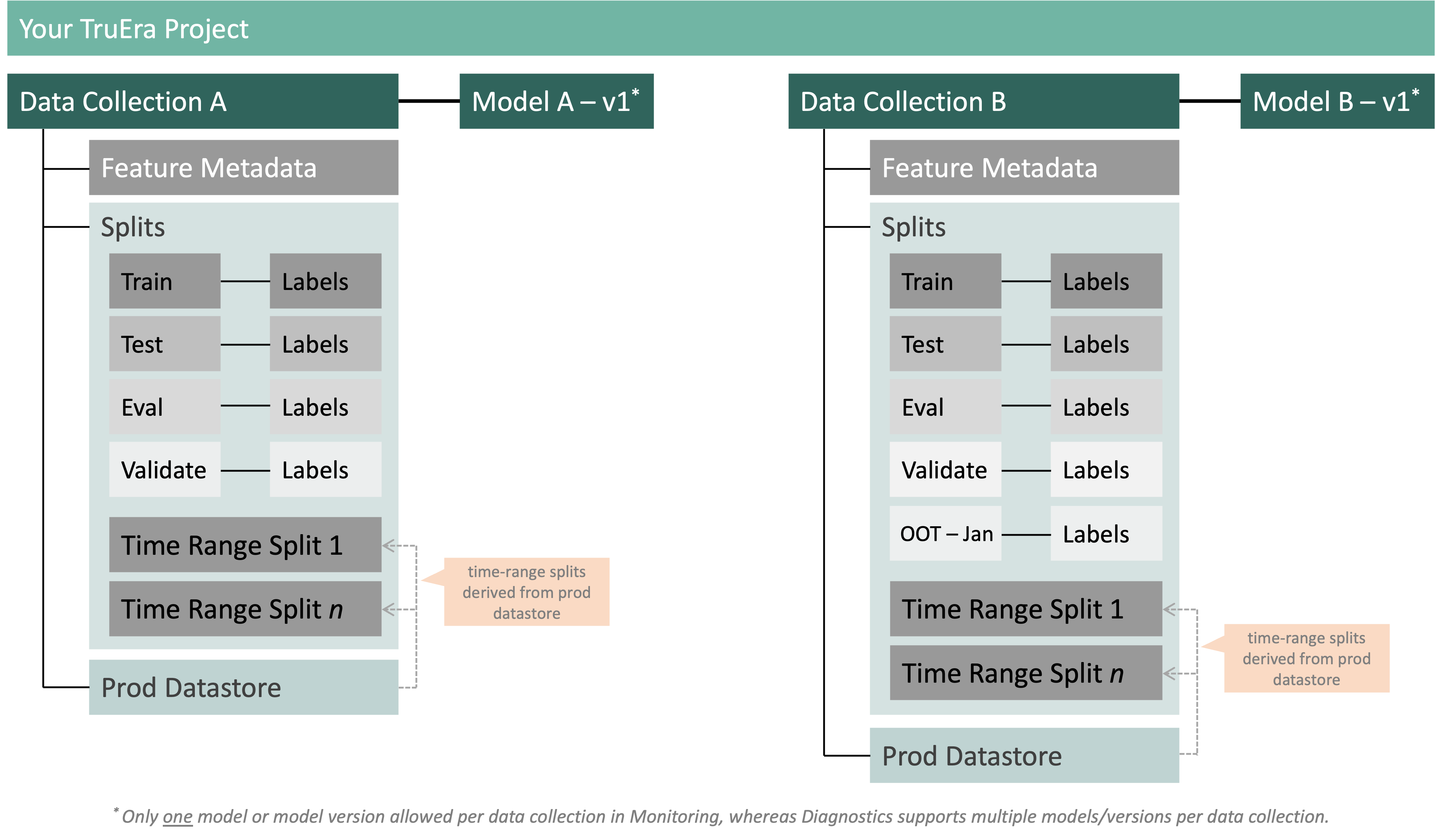Key Performance Indicators
Achievable targets that help measure progress against strategic objectives.Organizing a TruEra Project¶
A TruEra project organizes you work into a collection of related data and models.
The general project structure looks like this (click and hold to enlarge):

Reflected in the diagram above and active throughout the TruEra ecosystem, the essential concepts supporting TruEra project organization include:
Model – a trained machine learning classification or regression model, packaged to enable calculation of various model outcomes or results. Models receive inputs in a specified form known as the input data schema and then output a calculated prediction.
Data Splits - A data split is a specific subset of the project's data collection sharing the following characteristics:
- Input data [ready to be] fed into the model (i.e., feature values)
- Ground truthlabels corresponding to the input data, if availableInformation known to be real or true, provided by direct observation and measurement (i.e.. empirical evidence), as opposed to information provided by inference.
- Extra data used for deeper analysis such as creating segments.
Features are continually expanded throughout the course of a project so that it is not uncommon to build upon many different splits and models.
See Important Concepts for more on TruEra fundamentals.
Click Next below to continue.